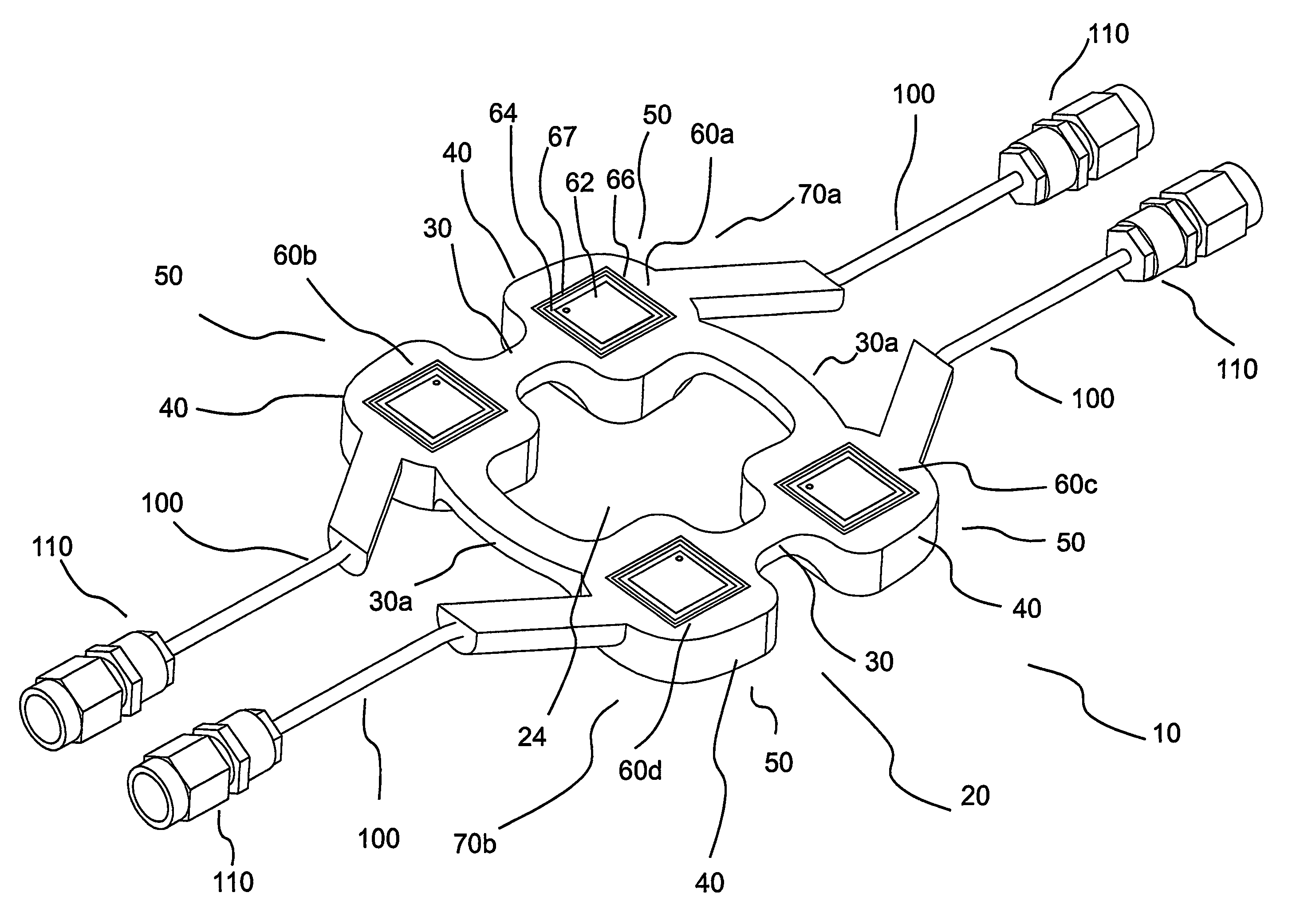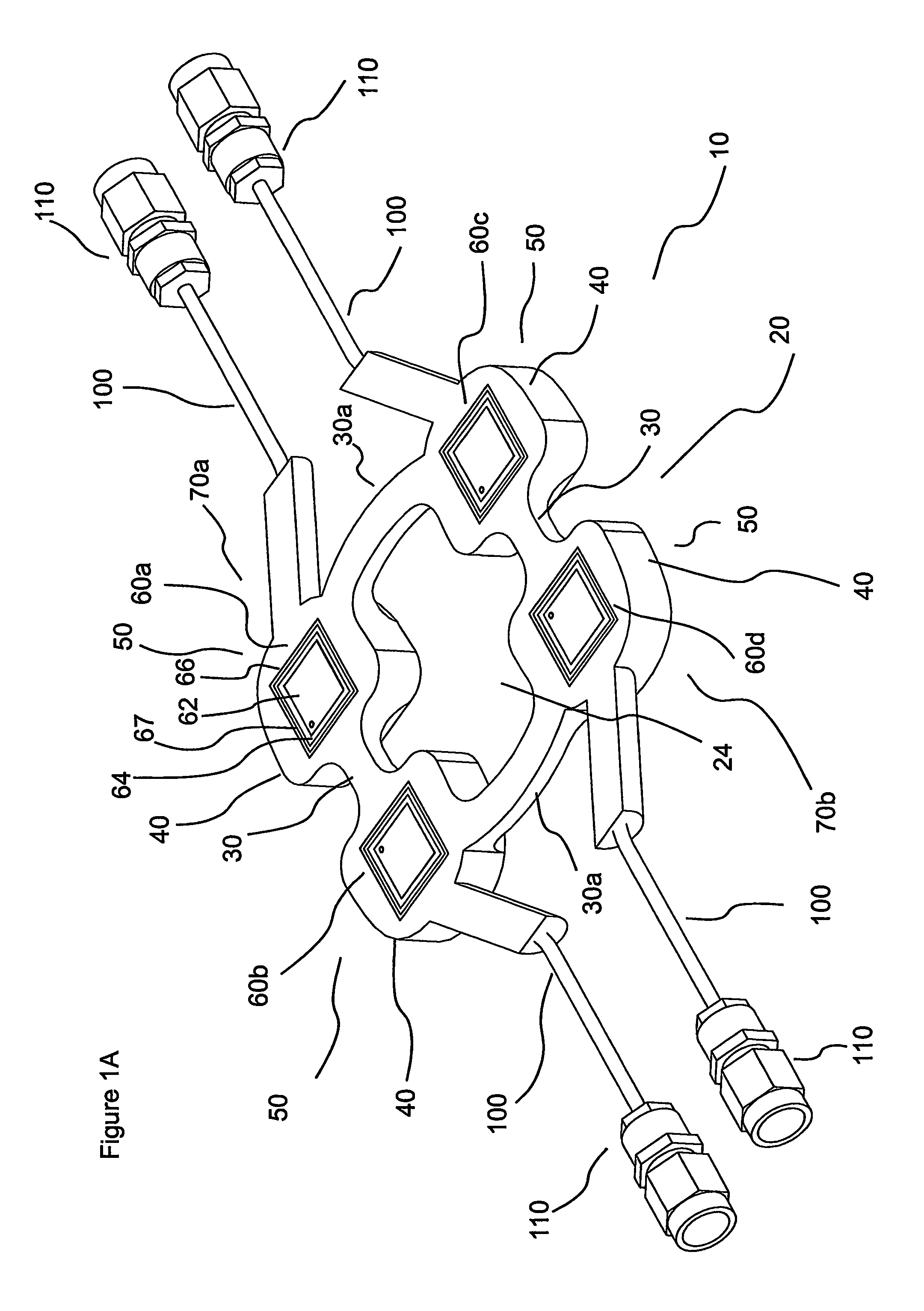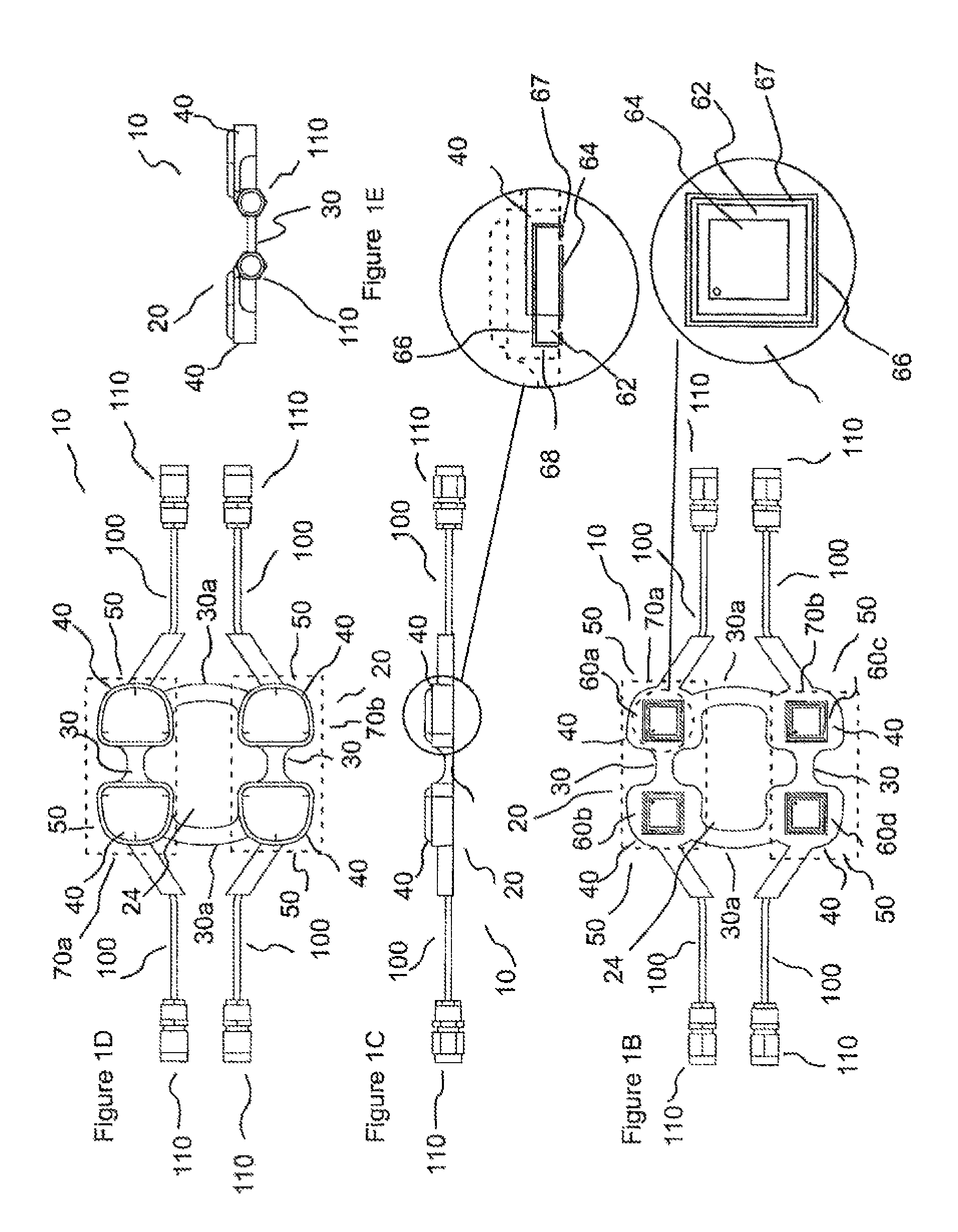System for detecting fluid changes and sensoring devices therefor
a technology of fluid level and sensor, applied in the field of detection, can solve the problems of blood collection and clot (hematoma), patient does not remember, and the head injury may have been so minor, so as to facilitate the removal of the attachment mechanism and reduce the sensitivity
- Summary
- Abstract
- Description
- Claims
- Application Information
AI Technical Summary
Benefits of technology
Problems solved by technology
Method used
Image
Examples
Embodiment Construction
[0056]While the sensors, systems and methods of the present invention are generally applicable to the sensing any fluid within body tissue (whether a body fluid or an introduced fluid), the present invention is primarily described herein with reference to the representative example of extravasation of a fluid intended to be injected into a vascular structure. One skilled in the art will appreciate, however, that elevated, abnormal or changing levels of generally any fluid can be detected using the sensors, systems and methods of the present invention. Detection of body fluids in the present invention includes, but is not limited to, the detection of fluid changes as a result of edema, hematoma, ruptured bowel and colostomy tubing leakage into the peritoneal cavity. Introduced or foreign fluid detectible in the present invention include fluid introduced via generally any technique known in the medical arts including, but not limited to, injection, infusion and IV drip. As described a...
PUM
| Property | Measurement | Unit |
|---|---|---|
| flow rates | aaaaa | aaaaa |
| frequency | aaaaa | aaaaa |
| frequency | aaaaa | aaaaa |
Abstract
Description
Claims
Application Information
 Login to View More
Login to View More - R&D
- Intellectual Property
- Life Sciences
- Materials
- Tech Scout
- Unparalleled Data Quality
- Higher Quality Content
- 60% Fewer Hallucinations
Browse by: Latest US Patents, China's latest patents, Technical Efficacy Thesaurus, Application Domain, Technology Topic, Popular Technical Reports.
© 2025 PatSnap. All rights reserved.Legal|Privacy policy|Modern Slavery Act Transparency Statement|Sitemap|About US| Contact US: help@patsnap.com



